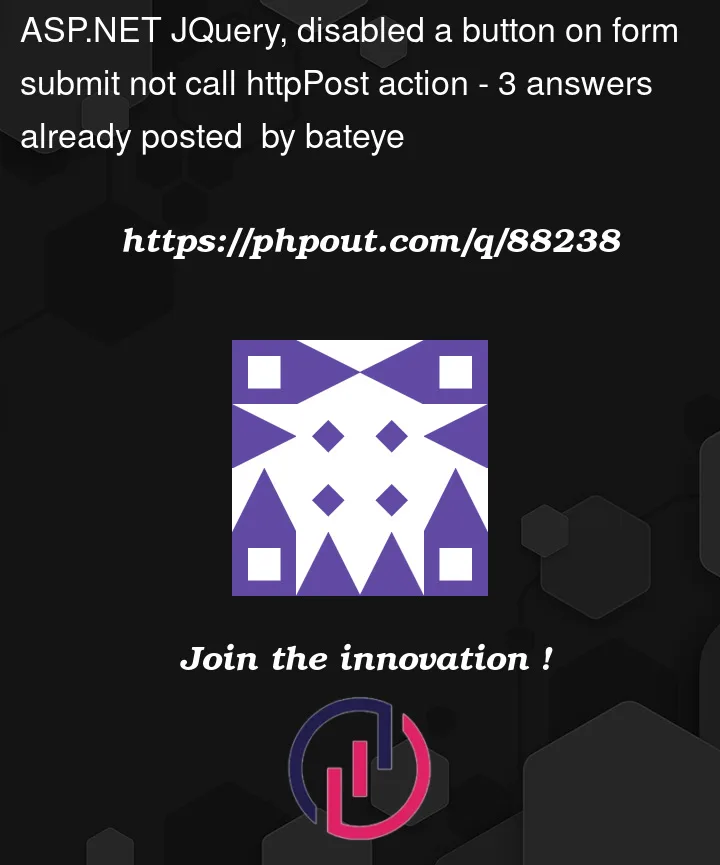I’m working in an ASP.NET MVC app and I want to disable a button when during OnSubmit event of the form, just for prevent double click of the users.
All JQuery part is working fine but I don’t understand why, when I disabled the submit button, it always call the default Action of my controller.
Here is the cshtml code:
@using(Html.BeginForm()){
<input type="submit" value="Submit"/>
}
<script>
$(function(){
$("form").submit(e=>{
$('input[type="submit"]').prop("disable",true)
})
})
</script>
The JQuery part works and make the button disabled.
My controller:
public class MyController:Controller{
public ActionResult MyController(ExampleModel model){
return View(model);
}
[HttpPost,ActionName("MyController")]
public ActionResult FormSubmmit(ExampleModel model){
//Do some checks
return View(model);
}
}
The case is that if I make the button disabled, the form always call the action ‘MyController’ instead of the action FormSubmit (is which I want to call).
Do somebody know why can be the reason of this "error"?




3
Answers
Firstable, thank for answer! And I just find the solution.
The problem of the code was if I use disabled it change the request metadata during the form submit event, so I can not make the button disabled.
I fount this solution, it just take off the pointer events from the button and then it prevent the double submit problem.
try this
and remove [HttpPost,ActionName("MyController")] from the action, it is a very strange attribute
This is a fast and reliable way of disabling the button to prevent any "Double click"
You can see the source here
Another way of doing this when submitting is to do an overlay and then redirect
function(Optional, I use it to stop the overlay and just to basically inform the user that the function is done)
HTML:
JS:
You can use this to create your own overlay GIF
and then in your controller where you are calling the Method you can end it with
and in your home page create a cshtml ButtonClicked.cshtml
and just create a landing page where you can insert some text for example:
Another option is doing an overlay with a timeout